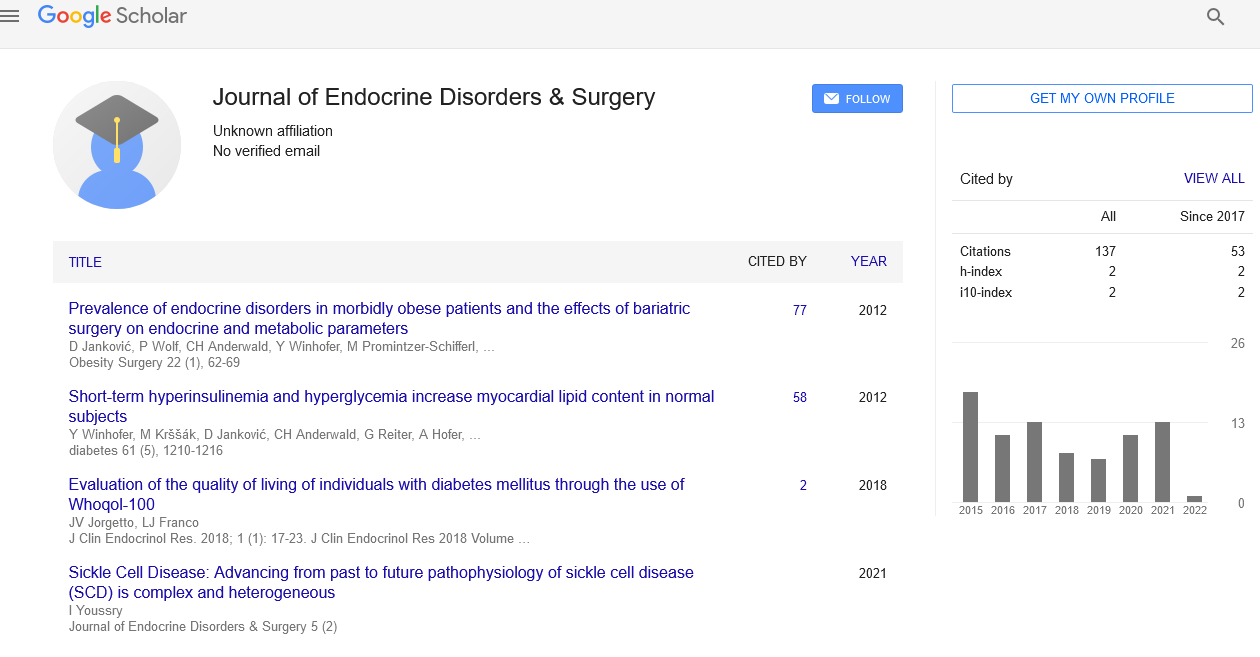
Sign up for email alert when new content gets added: Sign up
Abstract
Addison's disease with autoimmunity
Author(s): James Adams*A uncommon condition known as Autoimmune Addison Disease (AAD) is brought on by an immune system attack on the adrenal cortex. Autoantibodies against 21-hydroxylase (21-OH), a steroid enzyme expressed in the adrenal cortex, are frequently seen in patients with AAD. Adrenal steroid hormone insufficiency results from the adrenal glands being destroyed by the autoimmune onslaught. AAD is fatal if left untreated, however modern hormone replacement medication makes it possible to live. Treatment options include the replacement of glucocorticoids and mineralocorticoids, while the value of androgen replacement is questionable. Since existing oral replacement regimens produce intervals of supraphysiological and infraphysiological cortisol levels, the ideal glucocorticoid replacement therapy would replicate the natural diurnal cortisol cycle. However, this is not practical to do. To more accurately mimic the diurnal cortisol profile, a modified-release hydrocortisone tablet with an immediate-release coating and an extended-release core was produced in recent years. There is worry that patients frequently get excessive amounts of glucocorticoids, which can have detrimental effects on the heart and metabolism (such as reduced glucose tolerance and dyslipidemia). Aldosterone and 11-deoxycortison, the two natural mineralocorticoids, are not appropriate for replacement treatment; instead, the synthetic corticosteroid fludrocortisone is employed. The increasing mortality and morbidity recorded for individuals with AAD may be attributed to today's replacement treatment, which is far from physiological. AAD frequently co-occurs with autoimmune polyendocrine syndrome and other Organ-specific Autoimmune Diseases (APS). Mutations in the Autoimmune Regulator (AIRE) gene lead to the extremely uncommon monogenic illness known as APS-1. Chronic mucocutaneous candidiasis, hypoparathyroidism, and AAD are the three symptoms that define APS-1. AAD, autoimmune hypo- or hyperthyroidism, and type 1 diabetes (T1DM) are only a few examples of the $2 concomitant autoimmune endocrinopathies that characterise the much more widespread and genetically complicated APS-2 entity. An essential technique in patient monitoring is autoantibody screening, which can reveal the existence of or anticipate the onset of other autoimmune illnesses. Autoantibodies directed against 21- OH are a good diagnostic marker of AAD. Due to AAD's rarity, most studies have been too small to accurately assess the disease's natural course and comorbidities. The Swedish Addison Registry (SAR), which now has 813 people, is the world's biggest collection of clinical data and blood samples from patients with AAD. 660 AAD patients who were enrolled in the registry from 2008 to 2014 and who made up around 50% of all AAD patients in Sweden were characterised clinically and immunologically using the SAR. Our goal was to learn more about cardiovascular risk factors, replacement treatment, immunological profile, and comorbidities associated with autoimmune diseases.
Full-Text | PDF




